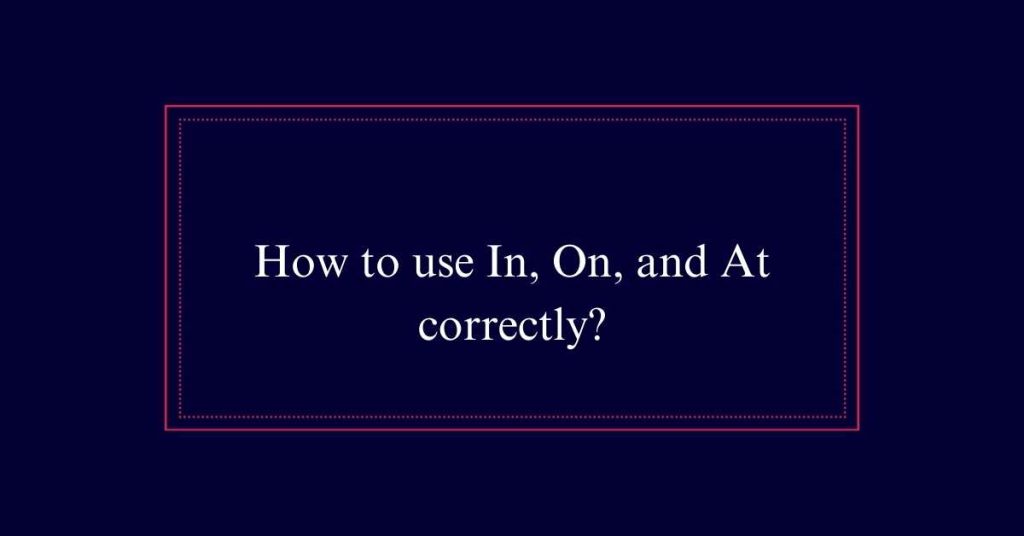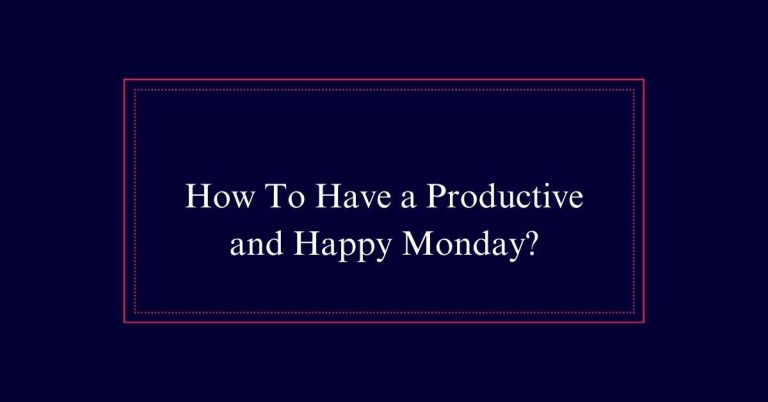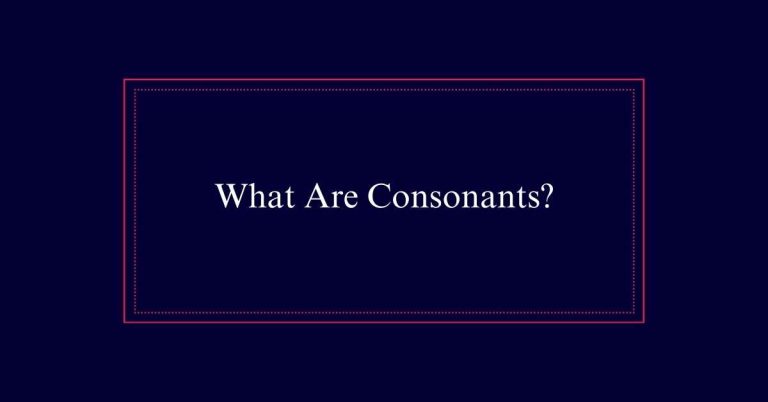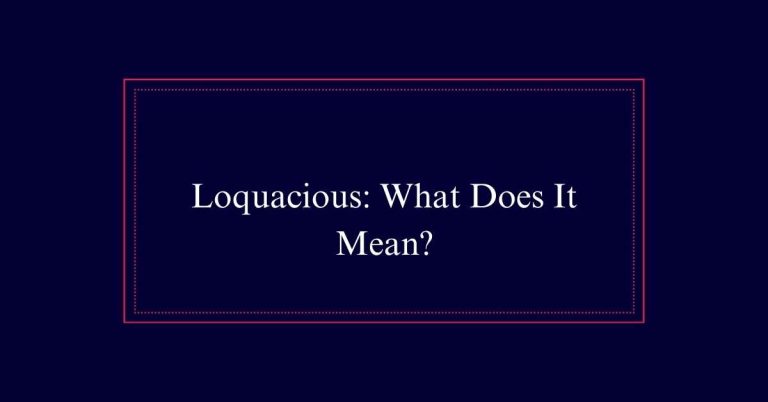How to use In, On, and At correctly?
English prepositions ‘in,’ ‘on,’ and ‘at’ have distinct uses that are essential for clarity. ‘In’ indicates inclusion within a space or time period, like ‘in the room’ or ‘in 2024.’ ‘On’ is used for surfaces or specific days, such as ‘on the table’ or ‘on Monday.’ ‘At’ points to precise locations or times, like ‘at the door’ or ‘at 5 PM.’ Each preposition follows a noun to form prepositional phrases, which specify time, place, and context.
Prepositions in English
Prepositions in English establish relationships between different elements within a sentence. They describe time (e.g., ‘in the morning’), location (e.g., ‘at the office’), connections (e.g., ‘mother of three puppies’), and details (e.g., ‘a movie with subtitles’). Prepositions are always followed by a noun to create a prepositional phrase, such as ‘at 8 p.m.’ or ‘on the table.’
Each preposition has specific usages that are not interchangeable. For example, ‘in’ is used for months and years, while ‘on’ is used for days. Learning the correct usage of each preposition is essential to avoid confusion. Incorrect preposition use can alter the meaning of a sentence, making clarity critical in communication.
Relationship Indicators
Relationship indicators in English include prepositions like ‘in,’ ‘on,’ and ‘at,’ which clarify the connections between different elements in a sentence.
For example, ‘in’ can show inclusion, as in ‘in the box,’ indicating something is inside.
On’ often denotes surface relationships, such as ‘on the table,’ meaning something is resting atop.
‘At’ specifies a precise point, like ‘at the corner,’ signifying a specific location.
These prepositions create prepositional phrases that provide context and detail. Understanding their correct use is essential to convey the right meaning. Misusing them can lead to confusion.
For instance, “in the bed” differs from “on the bed,” each painting a distinct picture.

Time Descriptions
Understanding how ‘in,’ ‘on,’ and ‘at’ function to indicate time is essential for clear communication. ‘In’ is used for longer periods such as months, years, and seasons. For example, ‘in July,’ ‘in 2020,’ or ‘in the summer.’
‘On’ is used for specific days and dates. For instance, ‘on Monday,’ or ‘on July 4th.’
‘At’ is used for precise times and specific moments. Examples include ‘at 8 p.m.’ and ‘at midnight.’
Mastering these prepositions helps avoid confusion. Remember, ‘in the morning,’ but ‘at night.’ Each preposition sets a different time frame, ensuring the correct understanding of when events occur. Use them accurately to enhance clarity in your writing and speech.
Location Descriptions
In English, ‘in,’ ‘on,’ and ‘at’ are essential for describing locations accurately. ‘In’ is used for enclosed spaces, such as ‘in the room’ or ‘in the city.’
‘On’ is applied to surfaces, like ‘on the table’ or ‘on the wall.’
At’ is used for specific points, such as ‘at the bus stop’ or ‘at the corner.’ These prepositions help clarify the exact location, ensuring clear communication.
For example, saying ‘She is in the building’ indicates she is inside, while ‘She is at the building’ suggests she is near the entrance.
Usage With Nouns
Prepositions ‘in,’ ‘on,’ and ‘at’ are always followed by a noun, forming prepositional phrases that add importance to sentences. These phrases help specify time, place, and context. For example, ‘in the morning,’ ‘on the table,’ and ‘at the park’ all provide specific details.
Understanding these usages is essential for clear communication. Proper prepositional phrases make sentences precise and easy to understand.
- In: Used for enclosed spaces or periods of time. Example: ‘in the room,’ ‘in July.’
- On: Used for surfaces or specific days. Example: ‘on the desk,’ ‘on Monday.’
- At: Used for specific points in time or locations. Example: ‘at 5 PM,’ ‘at the corner.’
Non-interchangeable Usages
Each preposition ‘in,’ ‘on,’ and ‘at’ has distinct usages that cannot be swapped without changing the meaning of the sentence.
For example, ‘in the car’ indicates being inside the vehicle, while ‘on the car’ suggests being on its surface. Similarly, ‘at the office’ specifies a location, whereas ‘on the office’ would be incorrect.
These prepositions also define various contexts. ‘In New York’ refers to being within the city’s boundaries. ‘On the street’ indicates a position along the street, and ‘at the corner’ specifies a precise spot.
Preposition of Time
Understanding the correct usage of prepositions of time is essential for clear and accurate communication in English. These prepositions help specify when something occurs. The three main prepositions of time are ‘in,’ ‘on,’ and ‘at.’
- In: Used for months, years, centuries, and long periods. Example: ‘in 2023,’ ‘in the morning.’
- On: Used for days and dates. Example: ‘on Monday,’ ‘on July 4th.’
- At: Used for precise times. Example: ‘at 8 p.m.,’ ‘at sunrise.’
Preposition of Place
In English, prepositions of place help us describe the location of objects and people. These prepositions include ‘in,’ ‘on,’ and ‘at.’
‘In’ is used for enclosed spaces, such as ‘in the room’ or ‘in the box.’ ‘On’ is used for surfaces, like ‘on the table’ or ‘on the wall.’ ‘At’ refers to specific points, such as ‘at the bus stop’ or ‘at the door.’
Each preposition offers a different perspective on location. For example, ‘in the building’ implies inside, while ‘at the building’ implies nearby or at the entrance.
Common Examples
Common examples of prepositions ‘in,’ ‘on,’ and ‘at’ can help clarify their correct usage in everyday situations.
- In: Used for enclosed spaces and longer periods. For example, ‘She lives In New York’ and ‘He was born In 1990.’
- On: Applied for surfaces and specific days. For instance, ‘The book is On the table’ and ‘We met On Monday.’
- At: Utilized for specific points and precise times. Examples include ‘They are At the park’ and ‘The meeting starts At 3 p.m.’
Avoiding Confusion
One effective strategy to avoid confusion with prepositions ‘in,’ ‘on,’ and ‘at’ is to memorize their specific uses with common time and place expressions. Understanding these distinctions enhances clarity and precision in communication. Here’s a helpful table to guide you:
| Preposition | Specific Use |
|---|---|
| In | Months, years, seasons |
| On | Days, dates |
| At | Specific times, locations |
| In | Enclosed spaces |
| On | Surfaces |
For instance, use ‘in’ for “in July” or “in 2024,” ‘on’ for “on Monday” or “on the table,” and ‘at’ for “at 4 p.m.” or “at the office.”
Frequently Asked Questions
How Do Prepositions Differ in British and American English?
Prepositions in British and American English often differ in usage. For example, Brits say “at the weekend” while Americans say “on the weekend.” Small variations like these highlight the distinct linguistic preferences between the dialects.
Can Prepositions Be Used at the Beginning of a Sentence?
Yes, prepositions can begin sentences. For example, ‘In the morning, I exercise.’ Starting with a preposition can emphasize timing, location, or manner. Guarantee clarity and grammatical accuracy when structuring such sentences.
How Do Prepositions Function in Phrasal Verbs?
Prepositions in phrasal verbs work with verbs to create specific meanings. For example, “give up” means to quit, while “run into” means to meet unexpectedly. These combinations are fixed, and their meanings often differ from individual words.







